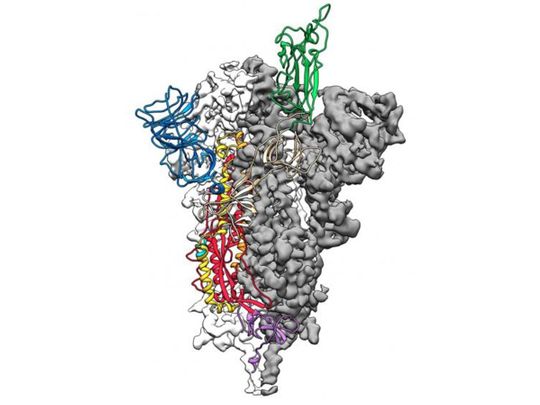
New York: Researchers have made a critical breakthrough towards developing a vaccine for the 2019 novel coronavirus (COVID-19) by creating the first 3D atomic scale map of the part of the virus that attaches to and infects human cells.
Mapping this part, called the spike protein, is an essential step so researchers around the world can develop vaccines and antiviral drugs to combat the virus, said the study published in the journal Science.
The scientific team is also working on a related viable vaccine candidate stemming from the research.
"As soon as we knew this was a coronavirus, we felt we had to jump at it, because we could be one of the first ones to get this structure. We knew exactly what mutations to put into this, because we've already shown these mutations work for a bunch of other coronaviruses," said the study's lead researcher Jason McLellan from the University of Texas.
McLella and his colleagues have spent many years studying other coronaviruses, including SARS-CoV and MERS-CoV.
They had already developed methods for locking coronavirus spike proteins into a shape that made them easier to analyse and could effectively turn them into candidates for vaccines.
According to the study, just two weeks after receiving the genome sequence of the virus from Chinese researchers, the team had designed and produced samples of their stabilised spike protein.
It took about 12 more days to reconstruct the 3D atomic scale map, called a molecular structure, of the spike protein.
The many steps involved in this process would typically take months to accomplish.
The molecule the team produced, and for which they obtained a structure, represents only the extracellular portion of the spike protein, but it is enough to elicit an immune response in people, and thus serve as a vaccine.
Next, McLellan's team plans to use their molecule to pursue another line of attack against the virus that causes COVID-19, using the molecule as a "probe" to isolate naturally produced antibodies from patients who have been infected with the novel coronavirus and successfully recovered.
In large enough quantities, these antibodies could help treat a coronavirus infection soon after exposure.
For example, the antibodies could protect soldiers or health care workers sent into an area with high infection rates on too short notice for the immunity from a vaccine to take effect, the researchers said.
So far, the overall death toll in China due to the deadly coronavirus has increased to 2,118, with a total of 74,576 confirmed cases.








